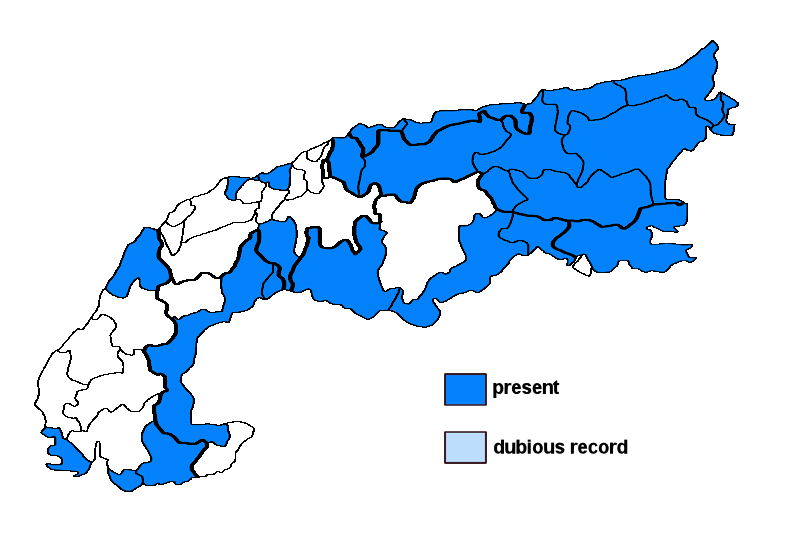Trapelia glebulosa (Sm.) J.R. Laundon
Syn.: Biatora coarctata (Sm.) Th. Fr. var. glebulosa (Sm.) Arnold, Biatora coarctata (Sm.) Th. Fr. var. ornata (Sommerf.) Th. Fr., Lecanora coarctata (Sm.) Ach. var. involuta (Taylor) Mudd., Lecanora coarctata (Sm.) Ach. var. ornata Sommerf., Lecanora involuta Taylor, Lecidea coarctata (Sm.) Nyl. var. glebulosa (Sm.) Mudd, Lecidea coarctata (Sm.) Nyl. var. ornata (Sommerf.) Malbr., Lecidea glebulosa (Sm.) Jatta, Lecidea ornata (Sommerf.) Hue, Lichen glebulosus Sm., Trapelia involuta (Taylor) Hertel, Trapelia ornata (Sommerf.) Hertel
Lichenised.
Substrate: siliceous rocks, lignum
Altitudinal range: from the mesomediterranean belt (potential vegetation: evergreen broad-leaved forests dominated by Quercus ilex) to the alpine belt (potential vegetation: treeless Alpine grasslands and tundras, to the lower limit of perennial snow and the equilibrium line of glaciers)
Note: a species with a minutely squamulose thallus, not easy to distinguish from some forms of T. coarctata; on basic siliceous rocks and various types of schists, roofing tiles, brick walls, mostly close to the ground, often together with T. coarctata; widespread in the Holarctic region, but not in the extreme north; widespread throughout the Alps.
Austria: Vorarlberg; Tirol; Salzburg; Kärnten; Steiermark; Oberösterreich; Niederösterreich (incl. Wien); Burgenland; Germany: Oberbayern; Schwaben; Switzerland: Luzern; Schwyz; Ticino; France: Alpes-Maritimes; Haute-Savoie; Vaucluse; Var; Italy: Friuli; Veneto; Lombardia; Piemonte; Slovenia: Alpine and Pre-Alpine Slovenia;





